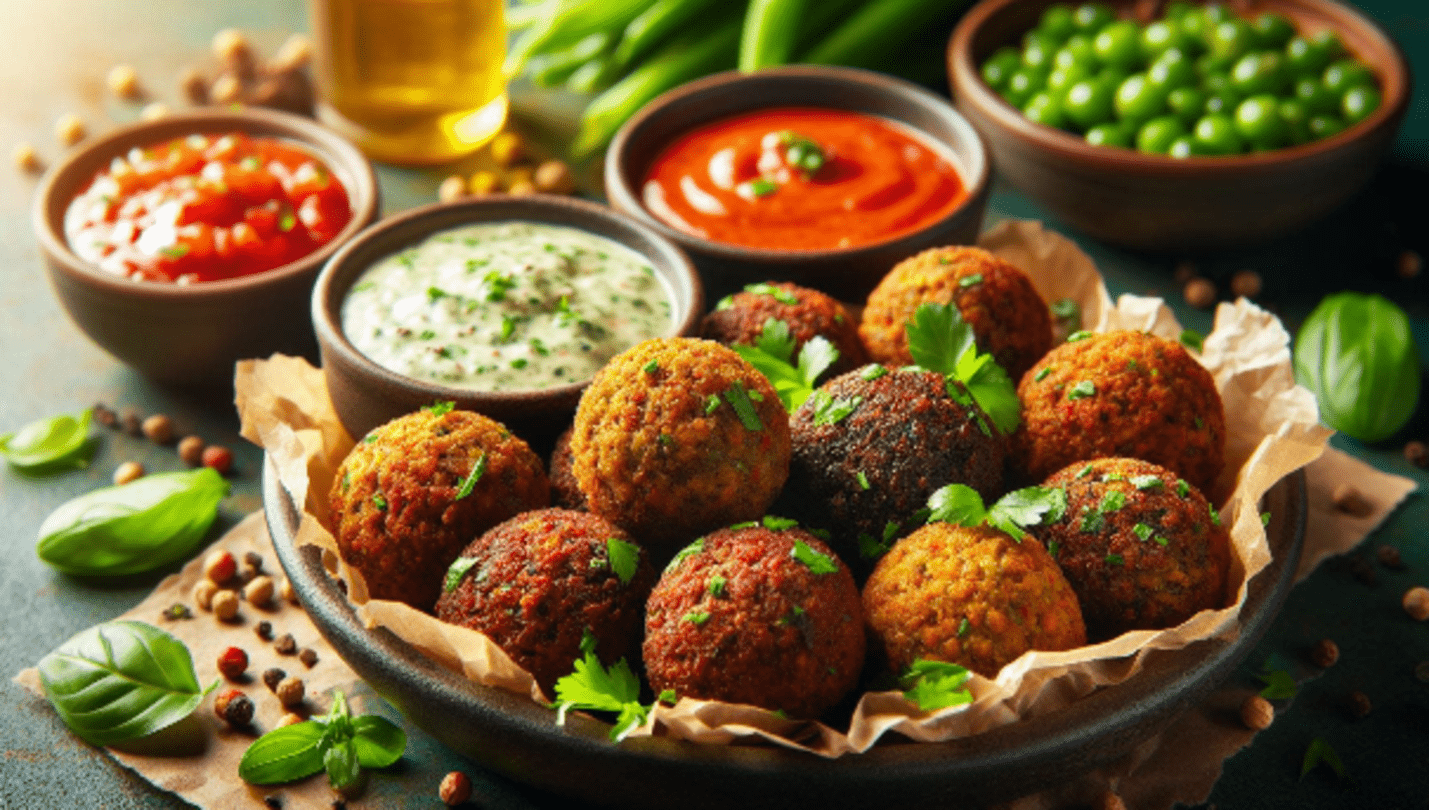Break the Fast in Style: Creative and Delicious Ways to Enjoy Falafel for Breakfast
Mar 13, 2024 | All TommyaaOutline of the Article
- Introduction to Falafel
- What is falafel?
- Origins of falafel.
- Breakfast Culture in the Middle East
- Importance of breakfast in Middle Eastern culture.
- Typical breakfast foods in the Middle East.
- The Rise of Falafel for Breakfast
- Changing trends in breakfast choices.
- Health benefits of falafel for breakfast.
- Variations of Breakfast Falafel
- Different ingredients used in breakfast falafel.
- Regional variations in breakfast falafel recipes.
- Recipes for Breakfast Falafel
- Traditional breakfast falafel recipe.
- Innovative twists on breakfast falafel.
- Tips for Perfect Breakfast Falafel
- Cooking techniques for crispy falafel.
- Serving suggestions for breakfast falafel.
- Health Benefits of Breakfast Falafel
- Nutritional value of falafel.
- Dietary advantages of incorporating falafel into breakfast.
- Incorporating Falafel into Your Morning Routine
- Meal prep ideas for busy mornings.
- Ways to enjoy falafel beyond the breakfast table.
- Conclusion
- Recap of the benefits of breakfast falafel.
- Encouragement to try this delicious and nutritious dish.
Falafel For Breakfast: Modern Middle Eastern Recipes
Introduction to Falafel
Falafel, a beloved Middle Eastern dish, has gained popularity worldwide for its flavorful taste and versatile nature. These small, deep-fried balls or patties are typically made from ground chickpeas or fava beans, mixed with herbs and spices, and then fried to crispy perfection. Originating from the Levant region, falafel has become a staple in Middle Eastern cuisine, often enjoyed as a street food snack or as part of a larger meal.
Breakfast Culture in the Middle East
Breakfast holds a special significance in Middle Eastern culture. It is considered the most important meal of the day, providing essential nutrients and energy to kick-start the day. Traditional Middle Eastern breakfasts are often a lavish spread of various dishes, including bread, cheese, olives, and salads, accompanied by hot beverages such as tea or coffee.
The Rise of Falafel for Breakfast
In recent years, there has been a noticeable shift in breakfast choices, with many people opting for healthier and more diverse options. Falafel, once reserved for lunch or dinner, has found its way onto breakfast menus around the world. This trend can be attributed to the nutritious profile of falafel, packed with protein, fiber, and essential vitamins and minerals.
Variations of Breakfast Falafel
Breakfast falafel recipes vary widely depending on regional preferences and culinary innovations. While the classic falafel recipe typically includes chickpeas, some variations incorporate fava beans or a combination of both. Additional ingredients such as parsley, cilantro, garlic, and spices like cumin and coriander add depth of flavor to the dish.
Recipes for Breakfast Falafel
For those looking to recreate the magic of breakfast falafel at home, there are countless recipes available to suit every palate. A traditional recipe might involve soaking dried chickpeas overnight, blending them with fresh herbs and spices, shaping the mixture into balls or patties, and frying until golden brown. However, modern twists on this classic dish may include baked falafel for a healthier alternative or adding unexpected ingredients like sweet potato or quinoa for a unique twist.
Tips for Perfect Breakfast Falafel
To achieve the perfect texture and flavor for breakfast falafel, it's essential to pay attention to cooking techniques and serving suggestions. Frying falafel in hot oil ensures a crispy exterior while maintaining a moist and flavorful interior. Serving falafel with a tangy tahini sauce, creamy hummus, and fresh salad greens enhances the overall dining experience.
Health Benefits of Breakfast Falafel
Despite being fried, falafel can be a nutritious addition to your morning routine. Chickpeas, the main ingredient in falafel, are a rich source of plant-based protein and fiber, promoting feelings of fullness and aiding in digestion. Additionally, the herbs and spices used in falafel recipes offer antioxidant properties and contribute to overall well-being.
Incorporating Falafel into Your Morning Routine
Incorporating falafel into your morning routine is easier than you might think. Consider meal prepping a batch of falafel ahead of time and storing them in the freezer for quick and convenient breakfasts on busy weekdays. Alternatively, think outside the box and use falafel as a protein-packed topping for salads, sandwiches, or grain bowls throughout the day.
Conclusion
In conclusion, falafel for breakfast offers a delicious and nutritious way to start your day. With its rich history, diverse flavors, and health benefits, falafel has earned its place on the breakfast table. Whether enjoyed as a traditional dish or with a modern twist, breakfast falafel is sure to delight your taste buds and fuel your body for the day ahead.
FAQs
-
Is falafel gluten-free?
- Yes, traditional falafel recipes are gluten-free as they are made from chickpeas or fava beans and do not contain wheat flour.
-
Can I bake falafel instead of frying it?
- Absolutely! Baking falafel is a healthier alternative to frying while still achieving a crispy texture.
-
Are there any vegan variations of falafel?
- Yes, falafel is naturally vegan as it is made from plant-based ingredients. Just ensure any accompanying sauces or toppings are also vegan-friendly.
-
Can I make falafel ahead of time and freeze it?
- Yes, falafel can be frozen after cooking. Simply allow them to cool completely, then store them in an airtight container or freezer bag for future use.
-
What are some creative ways to serve falafel for breakfast?
- You can enjoy falafel on its own with a side of tahini sauce or incorporate it into breakfast wraps, sandwiches, or even breakfast bowls with eggs and vegetables.
.png)












